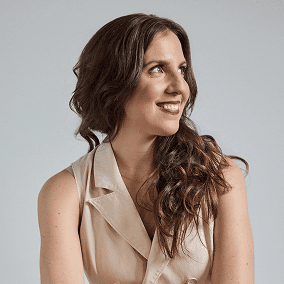Beth works for a major tech company as a project lead, and making decisions is her job. How should tasks be prioritized? Who should be assigned to each project? What type of reporting is needed? Every time Beth oversees a project, she makes hundreds of decisions to shape its strategy, direction, and vision.
Although Beth loved her job, she found it stressful to be responsible for so many decisions. Her thoughts would loop around again and again as she analyzed every last variable, hoping to make the “right” choices. She would fret about upcoming projects and envision every possible way things could go wrong. And then Beth would criticize herself for wasting time on scrutinizing options instead of taking action. Her thoughtful nature had a shadow side: she would overthink everything.
Beth is a perfect example of what I call a sensitive striver — a high-achieving person who processes the world more deeply than others. Studies have proven that sensitive individuals have more activity in brain regions associated with mental processing. In other words, not only do sensitive strivers’ minds take in more information, but they also process it in more complicated ways. While sensitive strivers like Beth are celebrated for their nuanced explorations of different angles and possibilities, they are also more vulnerable to stress and overwhelm.
Deliberation is an essential quality for effective leadership, and without it, outcomes tend to suffer. But for sensitive strivers like Beth, decision-making can be fraught with overthinking.
If you struggle with this issue, try the five strategies below to break the cycle of overthinking and make confident decisions in less time.
5 Ways to Halt the Desire to Overthink Everything
1. Let go of perfectionism
Perfectionism is a hindrance to quick and effective decision-making since it’s an exercise in all-or-nothing thinking. One perfectionistic roadblock is the belief that if you make any choice other than the “correct” one, then you’re a failure. (And that’s an additional example of faulty thinking: the idea that there is only one right option.)
Another way perfectionism can trip you up is through the misconception that you have to know everything, anticipate each turn of events, and make a complete plan before taking action. It’s paralyzing to try to think through every potential way things could unfold.
You can fight your perfectionistic tendencies by asking yourself questions like these:
- Which of these choices would have the biggest positive effect on my top priorities?
- Of the people who will be aware of this decision, which one or two of them do I least want to disappoint?
- Is there an action I can take today that would move me towards realizing my goal?
- Given the information I have right now, what is the best thing to do next?
Focusing on the next step is much more realistic and fruitful than trying to anticipate what to do months or years in advance.
2. Put the problem in perspective
Some decisions deserve lengthy and careful consideration, but many do not. Prior to making your choice, take a written inventory of which priorities, people, and goals will be affected by the decision you make. That will clarify whether the choice at hand is meaningful, or of marginal importance.
The 10/10/10 test is a tool that works along similar lines. If you’re worried about the consequences of a potential decision, ask yourself how you’ll feel about it 10 weeks later, 10 months later, or 10 years later. There’s a good chance that the decision at hand will not be very important or even memorable in the larger scheme of things. By taking the long view, you can set aside your perfectionism and take action toward your goal.
3. Let your intuition take the lead
Intuition is a form of pattern recognition. When confronted with a situation, your brain rapidly compares it to all of your past knowledge and experiences, then offers you a “gut feeling” based on this initial assessment. This process is automatic and much faster than conscious thought, so when time is of the essence and data’s in short supply, intuition can be the best way to make a choice. Studies have shown that the combination of intuition and logical thinking leads to faster, better, and more accurate decisions, and leaves you with more confidence in your decisions than you would have if you relied solely on analytical thinking. One study showed that the car buyers who used logic alone were happy with their decisions in the long run just one-quarter of the time. However, the buyers who relied on intuition were happy 60% of the time. The use of rapid cognition (AKA “thin-slicing”) lets the brain sidestep the desire to overthink everything and helps you make wise decisions.
Beth, whose story began this article, was so struck by the idea of letting intuition guide her decisions that she decided to spend 24 hours relying on her gut instincts. She called it her “Day of Disinhibition,” and it empowered her to make difficult decisions without self-censorship–even when she knew she ran the risk of upsetting stakeholders. “I decided to value not just what I did, but the means by which I did it, the speed, and how it made me feel,” she explained. “That optimized my mindset and prepared me for whatever came my way.” Give yourself a “Day of Disinhibition,” or try a much shorter experiment today and make a list of three to five instances from your past when you followed your intuition, along with how you feel about the outcome.
4. Mitigate decision fatigue
Hundreds of decisions demand your attention every day–from the outfit you choose to the order in which you answer your emails–and every single decision drains your reserves of mental and emotional energy. Feeling depleted makes you more likely to overthink everything, so the fewer choices you make, the greater your resources will be for the really important decisions.
You can lift the burden of making constant decisions by setting up simple routines, like a capsule wardrobe or a weekly meal plan. And you can look for ways to eliminate some decisions completely, like delegation, opting out of meetings, and setting up standardized protocols and best practices.
5. Construct creative constraints
Parkinson’s Law states that our work expands to fill however much time we allot to it. For instance, a one-month deadline for completing a presentation means that that project will take you an entire month. However, a one-week deadline would give you similar results in a fraction of the time.
Sensitive strivers unconsciously adopt this law to overthink everything and allow themselves to spend a week or longer worrying about a task that would only take an hour to complete. This is unduly stressful in addition to being inefficient.
By using creative constraints, you can give yourself accountability and bypass the lengthy process of overthinking. For instance, you can make a deadline for finalizing a decision. Set a phone alarm, mark the date in your calendar, or even reach out to a stakeholder and tell them when you’ll get back to them. My clients love to use “worry time,” which is blocking out a brief period during the day for problem-solving.
Remind yourself often that you have a competitive advantage due to your mental depth. By taming your tendency to overthink everything, you’ll empower yourself to use sensitivity as your superpower.
Overcome Overthinking
The sooner you take control of overthinking, the happier, more productive, and effective you’ll be at work. That’s where my new LinkedIn Learning course, Overcome Overthinking, comes in.
This course will show you how to:
- Stop worrying about things you can’t control
- Make better, faster decisions with less stress
- Build your confidence instead of dwelling on your shortcomings
- Conquer fear and take braver action in your career
Let go of overthinking from Overcome Overthinking by Melody Wilding




